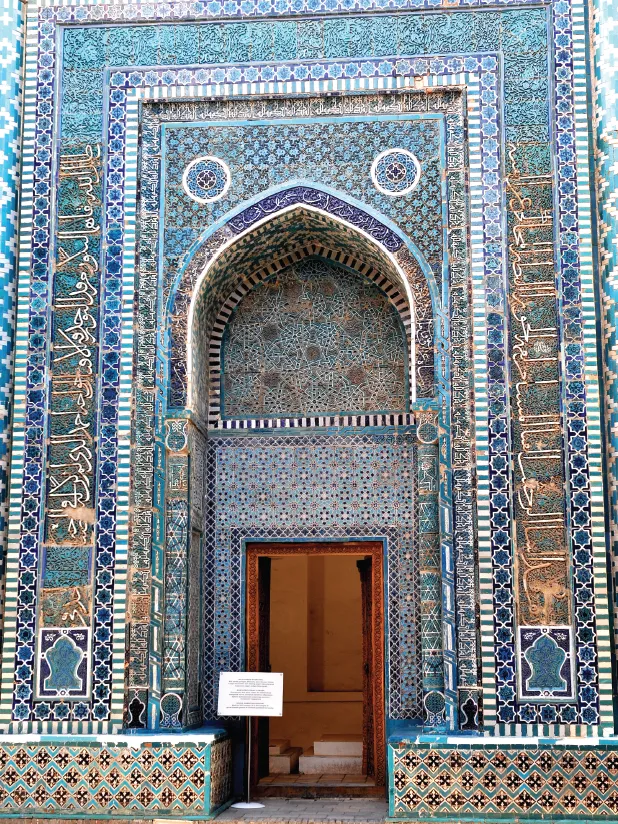
The name of a certain Khwaja (Khoja) Ahmad is mentioned in the dedicatory inscription on the portal that has caused a surmise that he was the man who had been buried in the mausoleum. However, this man might have been the father or the grandfather of the deceased since the middle part of the inscription (the family tree) is lost.
The portal of the mausoleum is of particular artistic value. It is faced with carved glazed terracotta toned in turquoise colors on which is written a very plastic dedicatory inscription. A filigree pattern of stalks, leaves, and flowers is carved in the background. A border of painted majolica tiles was used to edge the band with an inscription. This is a new technique of carved work in relief combined with widely different and contrasting color scores occurred in the Shahi-Zindah complex for the first time.
By the early 20th century, only the portal of the mausoleum in a state of disrepair had survived. In 1922, the outside walls were dug out and restored, the tombstones of carved marble were cleared out. At the same period, a crypt was found in the underground part of the mausoleum. In 1962, the strongly canted portal of the Khwaja Ahmad mausoleum was straightened up, the unique facing cleared of centuries-old dirt and reinforced. In the process of the latest restoration in 2005, the building base was reinforced again that has brought its deformation to stop.
You can read more about the inscriptions on the buildings of the memorial ensemble in the book-album “Samarkand. Shakhi-Zinda” series “Architectural epigraphy of Uzbekistan”.
The general sponsor of the project is the oilfield services company Eriell-Group.
